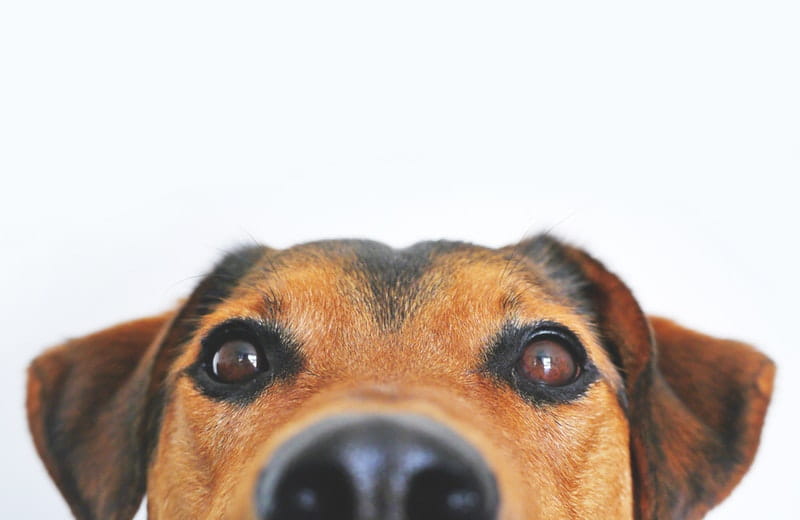The battle against fleas is a never-ending fight for dog owners. This is especially true if you happen to live in a warm climate year round. Outdoors, they prefer to live in tall grass hidden from the sun, or in the sand. Without proper protection, your pet is at risk of becoming a host of fleas whenever it is outside. Their bites are a source of constant irritation to your pet. This is doubly so if it is allergic to them. Flea allergies, or a heavy flea infestation, can result in constant scratching and hair loss.
Be warned, they’re are not just a nuisance for your pet. Fleas hitching a ride in on your pet from outside can wreak havoc in your home. Flea bites will leave you furiously scratching and irritated. Once finding their way in, fleas can embed themselves in many surfaces of the home. The most common flea hideouts include carpet and furniture.

1. Wash Pet Bedding
Where the dogs sleep, fleas are bound to be. Dog beds should be washed in hot and soapy water until there is no longer any trace of fleas on the bedding. Flea larvae and eggs are usually dropped by adults from your dog onto the dog’s bedding.
With this being said, it’s advised before the bed is lifted, to be vacuumed thoroughly to avoid unwanted eggs and larva falling into other places before being washed. Heat will kill fleas of all stages, make sure to make both wash and dry the bed at the hottest temperature the fabric can take.
2. Wash With Flea Shampoo
Dogs washed with a flea shampoo enjoy both being flea free and having a fresh clean coat. If you’re looking to simply kill fleas on your dog. You can use a dish soap such as Dawn as a household remedy. There are flea shampoos that can repel them after bathing as well.
Most flea shampoos offer lasting protection against fleas for about 15 to 30 days. When bathing dogs for fleas, make sure to lather the neck first. This prevents them from migrating to the dog’s ears and eyes, where it is less safe for you to shampoo.
3. Flea Combs
Using flea combs may not offer lasting protection as other methods, but they supply you with immediate flea removal for your pets. In order to best use a flea comb, make sure your dog’s fur is completely dry. While running the comb through, deposit any collected in a hot bucket of soapy water.
Keep in mind, the flea comb use is directly related to the number of fleas on your pets. If you have a dog that has only a few bugs, then the comb is right for you. If not, you may find yourself in need of other flea items.
4. Oral Remedy
Monthly oral medication is the go-to method of flea preventative for your dog. With brands such as Trifexis and Comfortis, your dog will be safe from them for about 30 days. To be noted is the ease of use of these medications. Most oral flea pills are flavored and if not, can easily be administered if popped in a hot dog.
Another advantage of oral remedies is that they protect your dog from more than just fleas. Take Trifexis, for example. Trifexis, when taken, not only protects your dogs from fleas. It also prevents your pets from getting hookworms, roundworms, whipworms, and heartworms.
5. Topical Remedy
While oral medication is becoming more popular today, the topical remedy still has a place in dog flea prevention. Topical remedies come in two different ways. One is a solution from a squeezable tube, the other flea collars. Frontline Plus and Advantix are two brands of topical remedies. Administered between the shoulder blades, these preventatives keeps dog fleas away for approximately 30 days.
Flea collars have varying levels of success when it comes to protection. Certain collars such as the Seresto however, provide constant protection from fleas as long as the collar is worn. The duration of which can last up to 8 months.
6. Vacuum
If you find yourself with a flea infestation, this will be one of the keys to keeping the eggs at bay. Fleas can scatter eggs almost anywhere your pet has been in the home. Make sure when vacuuming to go over the carpet, cracks and grooves behind the furniture, and where your pet sleeps at.
While other methods kill the adult flea and larvae eggs, cocoons are resistive to carpet treatments and must be vacuumed. Vacuuming must be done at regular intervals alongside pet flea prevention and chemical remedies for your house and yard for best results.
7. Steam Clean
For those who wish to perform a chemical-free treatment of their home, steam cleaning will always remain an option. As said, fleas and larvae are incredibly susceptible to heat. Due to the nature of steam, if the heat won’t kill them, which it will, they can still drown in the water.
Steam cleaners can be used on a multitude of surfaces. Being water, the steam cleaners are void of chemicals that may be hazardous to pets and children. They also hold the advantage of being able to penetrate deeper into carpets than other tools, killing the flea eggs as well.
8. Chemical Treatments
Treating your yard should be your very first line of defense against fleas. Spraying an insecticide over the yard will kill any adults in the area, thus nipping any flea situation in the bud. Spray the yard repeatedly as needed.
If the infestation is bad enough, it may be recommended to use insecticide foggers in your home. Foggers, typically in 6 oz cans, will emit a constant stream of insecticide that will kill any flea not in a cocoon. Make sure not to set more than one fogger per room and to vacate the house entirely with your pets.